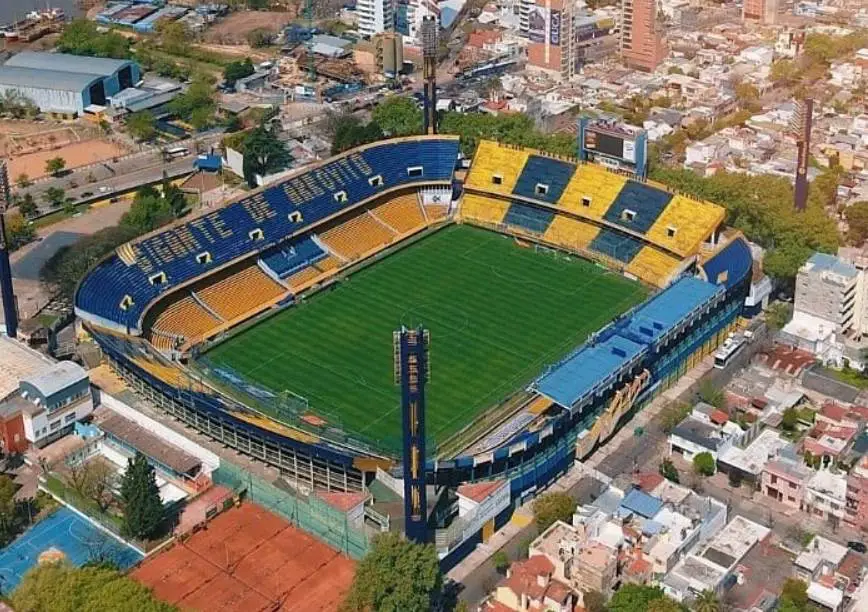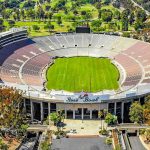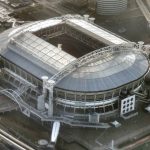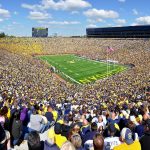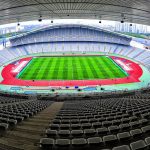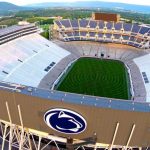Some of the most amazing football fans in the world are in South America and some of the most passionate support can be found in Argentina.
The country produced two of the greatest players the world has ever seen, Diego Armando Maradona and Lionel Messi.
Association football (or soccer as 9 countries call it), resembles a religion in this large country in South America and the level of the top-tier competition is quite good, even by European standards.
The Primera División was established in 1891 and is currently a league in which 28 teams compete and the largest stadiums in Argentina are the home of the biggest clubs in this competition.
Without further ado, here is a list of the biggest stadiums in Argentina.
1. Estadio Monumental Antonio Vespucio Liberti
- Location: Buenos Aires
- Capacity: 70,054
Estadio Monumental Antonio Vespucio Liberti is the official name of a stadium in Buenos Aires that is commonly referred to as “El Monumental.” It’s the home stadium of the popular Argentine football club River Plate and was named after former club president Antonio Vespucio Liberti (1900–1978).
This enormous arena is by far the biggest stadium in Argentina and therefore also serves as the main venue of the Argentine national football team. It’s a historic stadium that was constructed between 1936 and 1938 and little has changed since except for two renovation projects in 1978 and 2021.
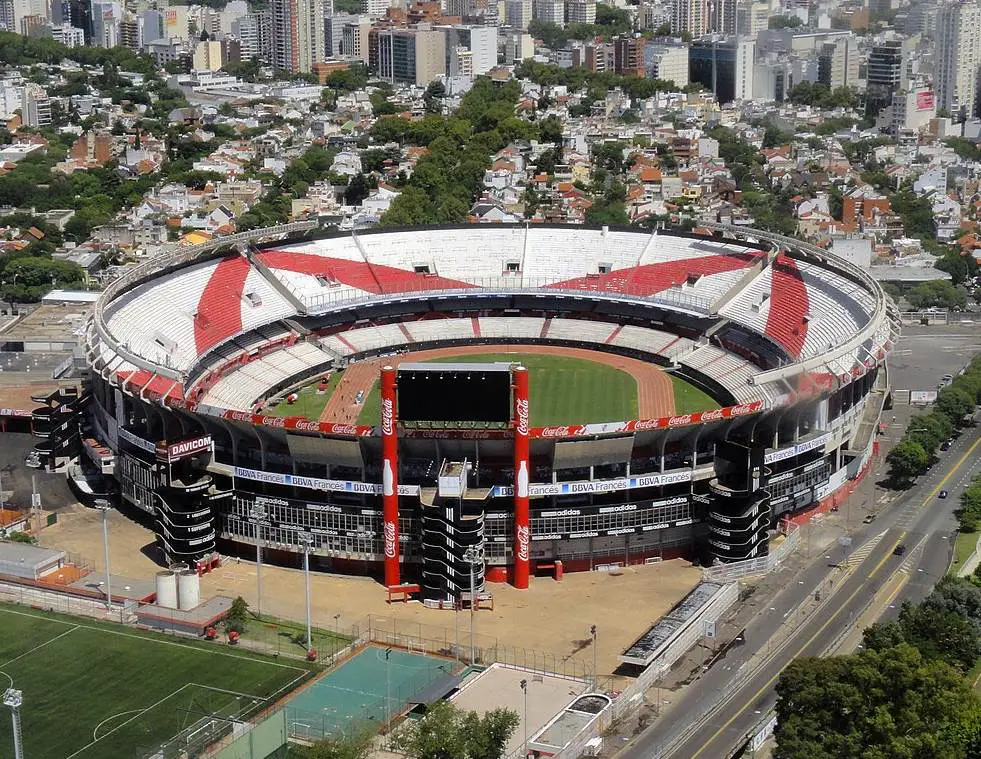
2. Estadio Presidente Juan Domingo Perón
- Location: Avellaneda
- Capacity: 61,000
Estadio Presidente Juan Domingo Perón s the official name of a stadium commonly referred to as “El Cillindro de Avellaneda. Avellaneda is a city that is part of the enormous metropolitan area of Buenos Aires and the stadium is the home venue of another popular football club in Argentina, Racing Club.
The magnificent design of the stadium was completed by German engineers between 1949 and 1950. The stadium was the first in Argentina to feature roofs over all stands, features that were added during a renovation project that was completed between 1995 and 1997.
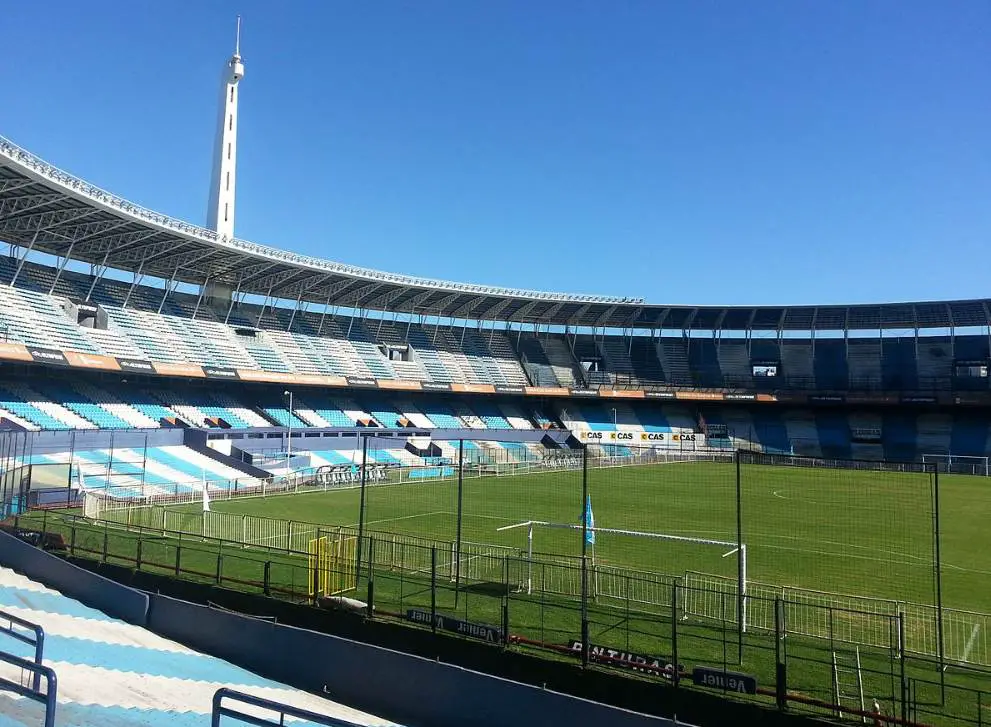
3. Estadio Mario Alberto Kempes
- Location: Córdoba
- Capacity: 57,000
Estadio Mario Alberto Kempes is another major stadium in Argentina that is located in the Chateau Carreras district of Córdoba. Apart from serving as the home venue of two local football clubs, Talleres and Belgrano, it’s also used for rugby matches and occasionally the Argentina national football team.
The stadium was constructed between 1976 and 1978 and received a serious facelift between 2011 and 2012. It’s one of the stadiums in Argentina that was constructed especially for the 1978 FIFA World Cup. It was renamed in honor of former Argentine football player Mario Kempes, the top scorer during this event.
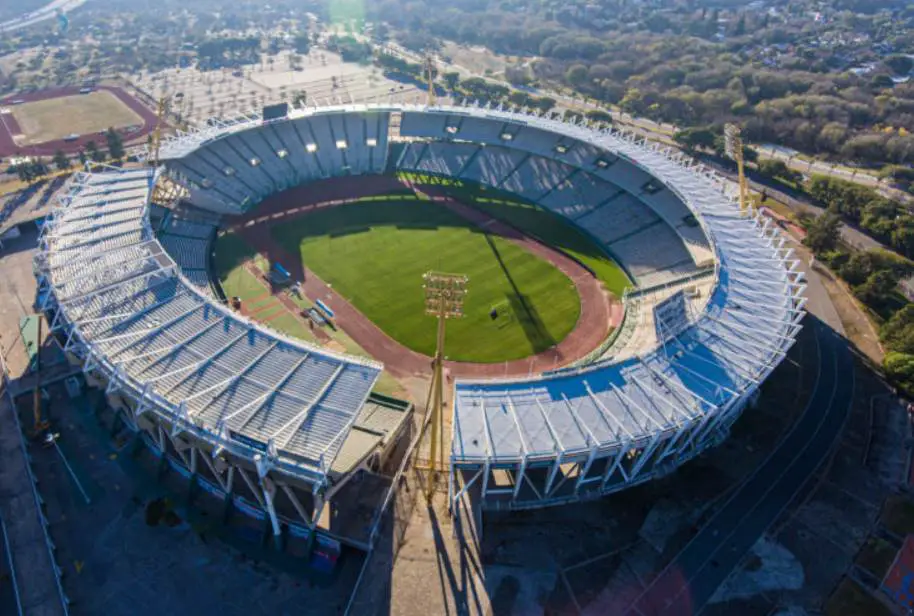
4. La Bombonera
- Location: Buenos Aires
- Capacity: 54,000
La Bombonera is a stadium in the la Boca District of Buenos Aires and the iconic home stadium of the Argentine football club Boca Juniors. The stadium is officially known as the Estadio Alberto José Armando but is nicknamed “La Bombonera for its design that resembles a chocolate box.
The stadium features a three-tiered horseshoe design and a flat stand on one side. La Bombonera is renowned for its amazing acoustics and the passionate fans were therefore the first in world football to be called “La Doce” or “The Twelfth Man,” a name that has become synonymous with noisy fans around the world.
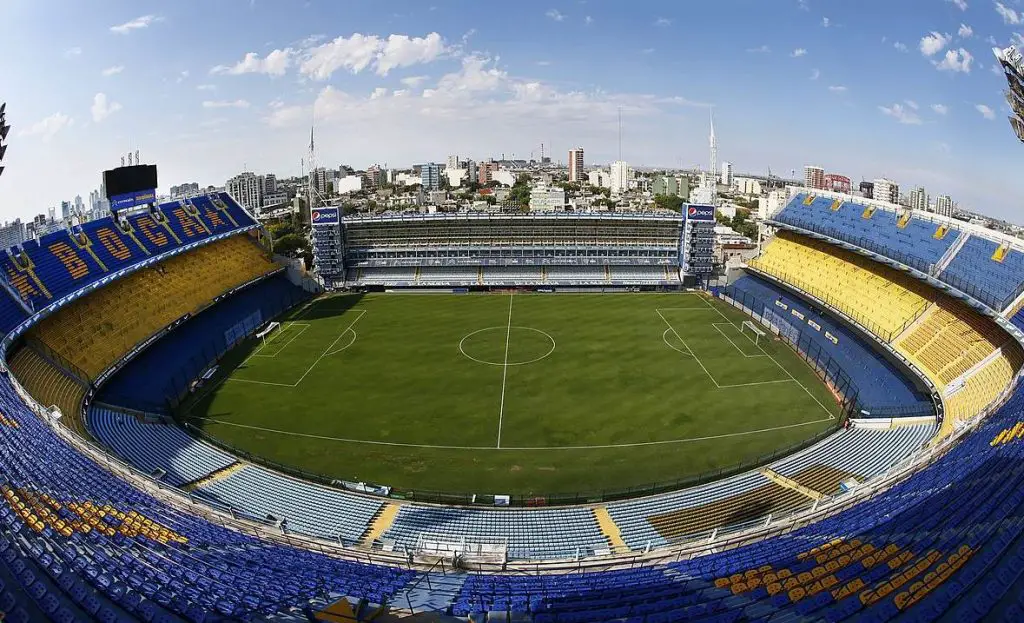
5. Estadio Único Diego Armando Maradona
- Location: La Plata
- Capacity: 53,000
Estadio Único Diego Armando Maradona or “One-of-a-kind Diego Armando Maradona Stadium” is the new name of a stadium that was once known as the “Estadio Ciudad de La Plata.” It’s the main sports venue in the city of La Plata, the capital city of the Buenos Aires Province.
The stadium serves as the home venue of two local Primera Divisón football clubs named Estudiantes La Plata and Club de Gimnasia y Esgrima La Plata. The stadium was constructed between 1997 and 2003 and was considered the most modern football temple in South America at the time. It’s also frequently used for concerts.
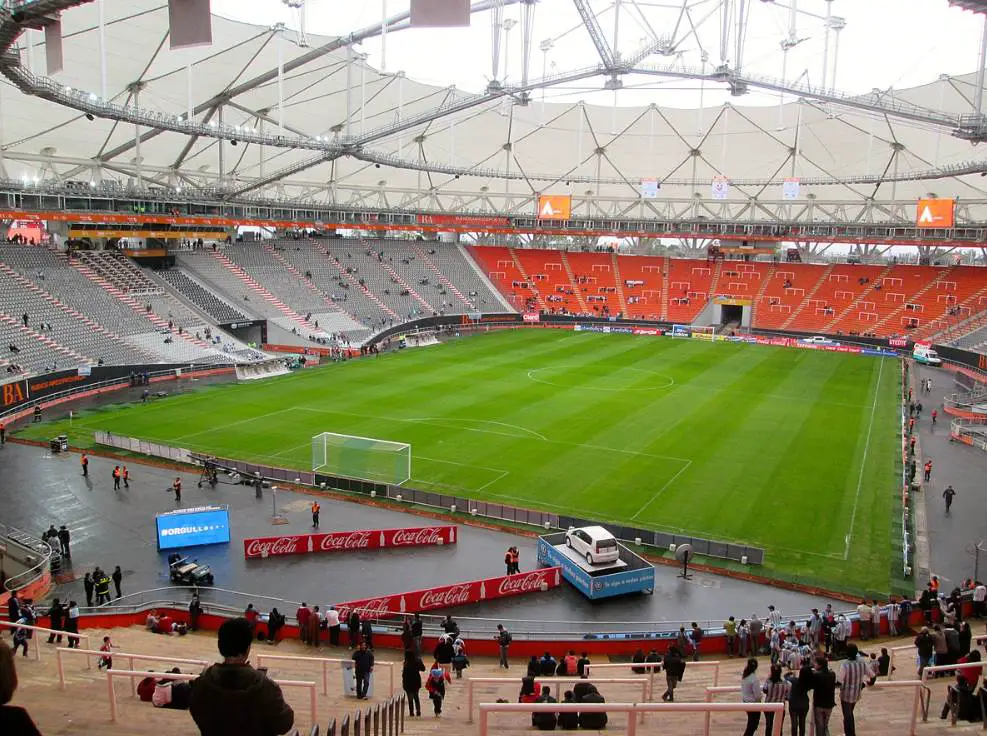
6. Estadio José Amalfitani Stadium
- Location: Buenos Aires
- Capacity: 49,540
Estadio José Amalfitani Stadium is a stadium located in the Liniers District of Buenos Aires which is located just west of the central area of the city. It serves as the home venue of the football club Vélez Sarsfield which competes in the Primera División.
The original stadium in this location was a small facility that was constructed in 1913. This stadium was replaced by another temporary wooden structure in the 1940s before a much larger stadium was completed between 1947 and 1951. It has been expanded once in its history in 1978 to hist 3 group games of the 1978 FIFA World Cup.
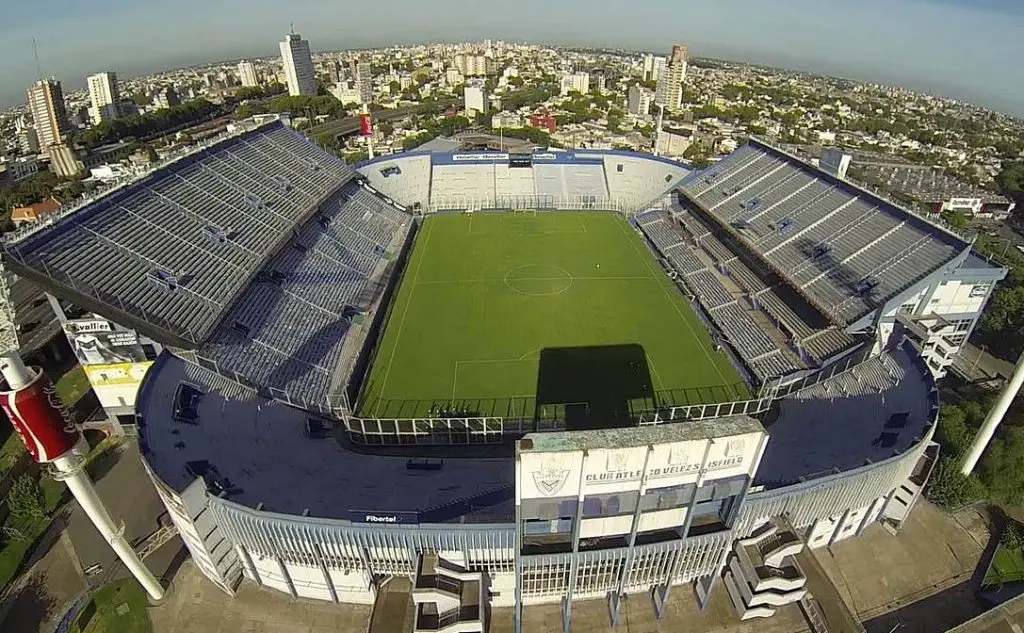
7. Estadio Tomás Adolfo Ducó
- Location: Buenos Aires
- Capacity: 48,314
Estadio Tomás Adolfo Ducó is a stadium in the Parque Patricios neighborhood of central Bunes Airos and serves as the home of the local football team Club Atlético Huracán. The stadium first opened its doors in 1924 and was completely rebuilt during the 1940s.
The original stadium featured a concrete racetrack that was used for both motorcycle racing and track cycling. What’s remarkable about his stadium is that apart from some minor projects, it still looks pretty much the same as it did back in the late 1940s.
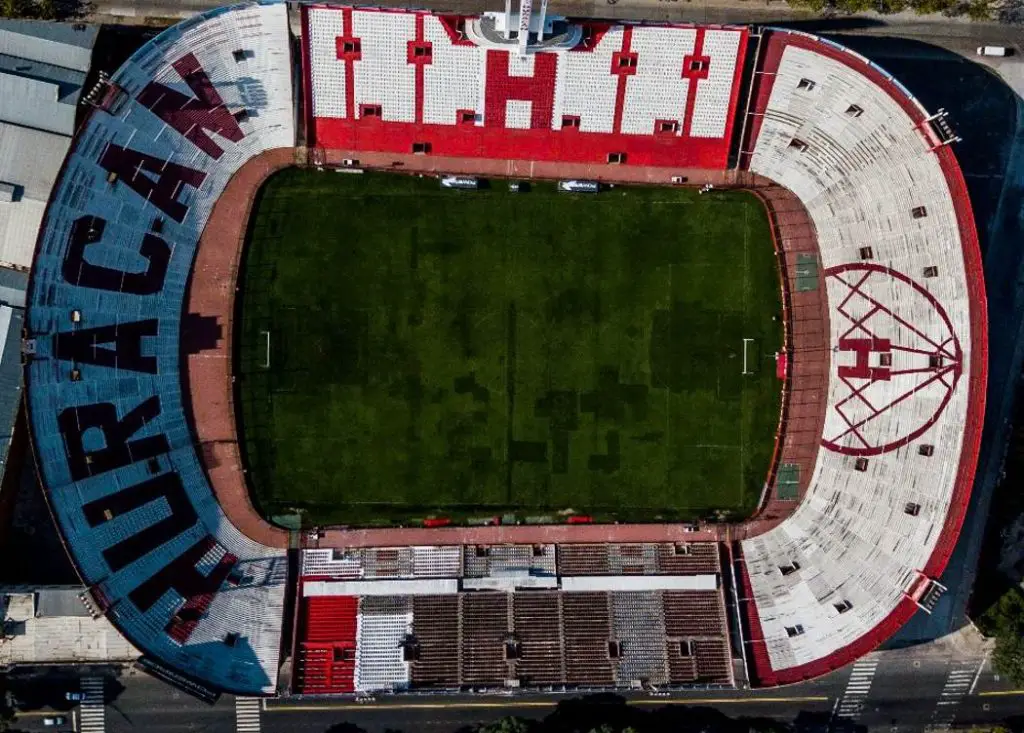
8. El Nuevo Gasómetro
- Location: Buenos Aires
- Capacity: 47,964
Estadio Pedro Bidegain is the official name of a stadium commonly referred to as “El Nuevo Gasómetro.” It serves as the home venue of the football club San Lorenzo de Almagro, one of the most popular football clubs in Argentinian history with a very passionate following.
The stadium replaced the “Viejo Gasómetro” which was located in the nearby district of Boedo. 5he stadium first opened its doors in 1993 and it was a forced move because their old stadium was seized by the military government in 1979. The club won a court case in 2019 which might allow them to move back to Boedo soon.
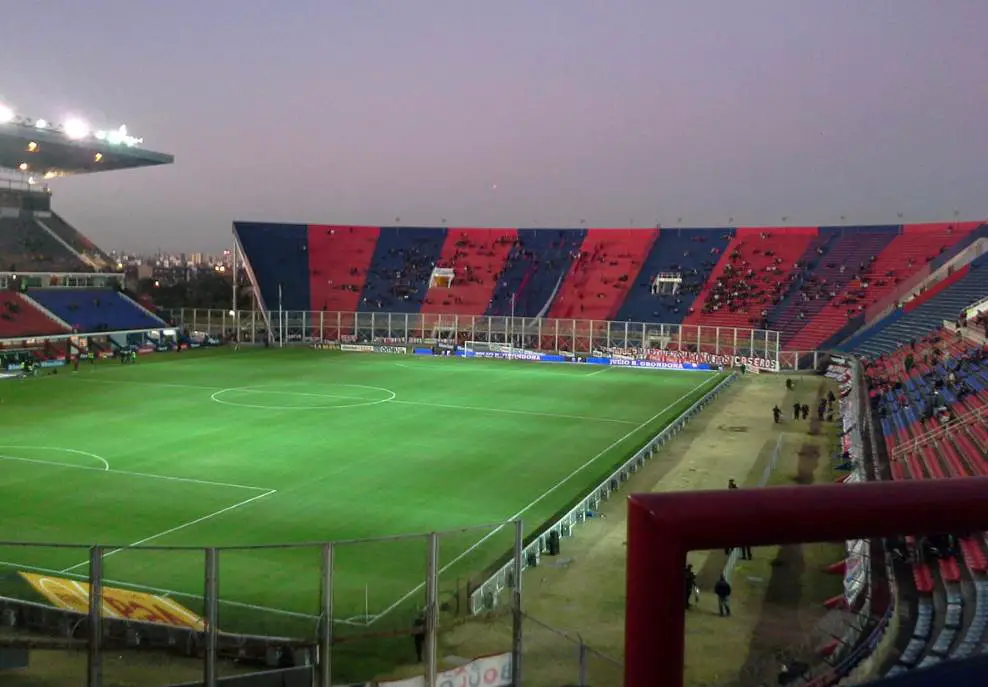
9. Estadio Ciudad de Lanús
- Location: Lanús
- Capacity: 47,027
Estadio Ciudad de Lanús is a stadium in Lanús that is nicknamed “La Fortaleza” or “The Fortress.” It’s the home venue of the football club Club Atlético Lanús and has been since the stadium first opened its doors in 1929. It was a humble venue back then that was quickly expanded to accommodate 30,000 spectators.
The first concrete grandstand of the stadium wasn’t constructed until the 1960s. The rest of the stadium was still made of wooden stands. Today, the venue is one of the biggest stadiums in Argentina and became so after an expansion phase that was completed in 2003.
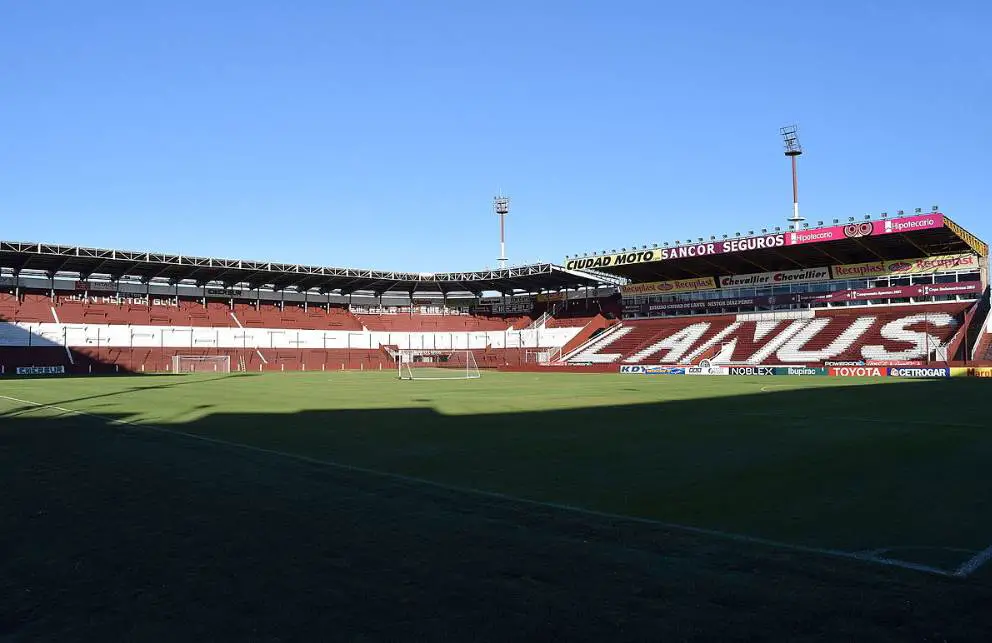
10. Estadio Gigante de Arroyito
- Location: Rosario
- Capacity: 45,465
Estadio Gigante de Arroyito is a stadium in the city of Rosario and is the home venue of the local football club Rosario Central. The club also owns the stadium that has a history that goes back to a venue with simple bleachers when it first opened in 1926.
The stadium was renovated and expanded multiple times in the 1950s and 1960s and received a serious upgrade when it was chosen to serve as one of the venues of the 1978 FIFA World Cup. The stadium hosted 5 games during this event, including 3 second-round games of the Argentinian national football team.
